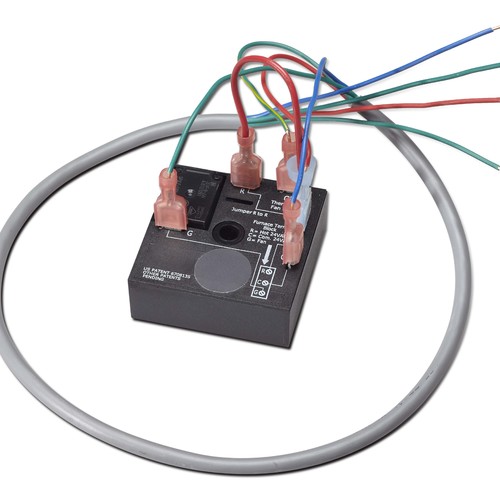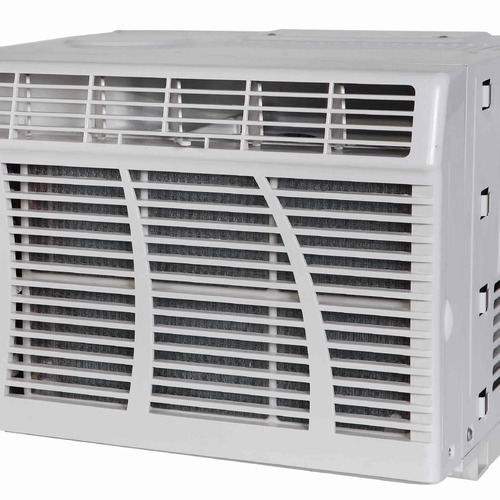
Karyn and I recently celebrated our wedding anniversary by taking a two-day bicycle trip that included a stay in a Vermont inn. I noticed that our bed-and-breakfast bedroom had a single window, presumably sized to be an egress window. There was a window-mounted air conditioner in the window, which got me thinking: is it legal to install a window-mounted air conditioner in an egress window, if the window is the only window in the bedroom?
After conducting some research, I know the answer to the question. Like almost all code questions, the answer is, “It depends.” Whether or not this type of air-conditioner installation is legal depends almost entirely on the discretion of your local building inspector.
Common problems with egress windows
There are several ways that builders and remodelers get in trouble for violations of egress-window requirements—technically known as “emergency escape and rescue opening” requirements for bedrooms. Typical violations include:
- Basement bedrooms that lack an egress window
- Bedroom windows that are too small
- Bedroom windows with stools that are too high off the floor
Disputes over window-mounted air conditioners are less common, but they certainly occur.
What does the code say?
Code requirements for emergency escape and rescue openings can be found in Section R310 of the International Residential Code.
To meet emergency egress requirements, a window:
- Needs to be operable (not fixed).
- When opened, needs to have an opening that begins no higher than 44 in. above the flooring.
- Needs to have an opening that is at least 20 in. wide.
- Needs to have an opening that is at least 24 in. high.
- Needs to have an opening that measures at least 5.7 sq. ft. (unless the window is located on the ground floor, in which case the minimum opening area is 5 sq. ft.).
Note that a window that barely meets…
Weekly Newsletter
Get building science and energy efficiency advice, plus special offers, in your inbox.

This article is only available to GBA Prime Members
Sign up for a free trial and get instant access to this article as well as GBA’s complete library of premium articles and construction details.
Start Free TrialAlready a member? Log in















8 Comments
Building operational requirements seem to be often poorly documented and communicated. Many communities don't really inspect for operational concerns, or only do so in commercial buildings above a certain size, or only on commercial buildings and residential buildings that are not owner-occupied. When Portland, Maine started (or perhaps started to prioritize) rental inspections a few years ago, they even made a finer grain separation and concentrated on buildings with multiple rental units only.
I pulled up Portland's inspection checklist and it's not clear what it's even based on. Smoke alarms and water heater pressure relief - ok, I can probably dig those out of the construction code, but what about the requirement that all window screens are installed? That all windows open easily (not limited to egress, ALL windows)? What about the requirement that all vehicles on the property be registered?
These all sound like reasonable requirements I guess (well, except for the vehicle registration requirement which seems odd), but like the question regarding air-conditioners in egress windows, it's just not clear where some of these guidelines come from and where the general public should find them. It makes compliance more difficult than it should be just because the information isn't readily available.
You could build a new rental property in Portland, Maine and receive an occupancy permit, but still easily fail the operational rental inspection because the codes being enforced aren't clearly communicated. The checklist simply refers to "all city, state, and federal codes". The FAQ just says "Life Safety" and links to the generic NFPA code website (doesn't even tell you which code despite the state of ME pretty explicitly adopting the NFPA 101 2018).
Making compliance reference documents more available to the general public can only reduce the workload on inspectors and building compliance departments. It's telling that one of the references in this article is to some meeting minutes for a Plymouth, MA Board of Selectmen meeting. Imagine trying to comply with requirements buried in documents like these! Beware of the Leopard!
Sam,
You make excellent points. In short, (1) Building codes are very poorly written and therefore hard to interpret, (2) Building codes aren't written with builders in mind, (3) Building codes are surprisingly vague about a few important issues, and (4) When vague, building codes are subject to local interpretation, which varies from community to community, and (5) Code summaries and checklists are often arbitrary and sometimes include idiosyncratic notions from local building inspectors, and finally, (6) Many code provisions are rarely enforced.
It's a mess.
Yeah with use cases like B&B, airbnb, rentals you have an endless list of local ordinances and federal regulations.
A local village here doesn't allow basement dwellings regardless of egress. Short term rental ordinances for AirBnBs are starting to require more smoke detectors and egress points (and of course parking/driveway)
I'm in an agricultural area where there is a lot of ag worker housing. They require that nothing can be blocking the egress window (dressers and bunk beds are common ones) but OSHA requires all windows to have a >=16 mesh screen along with all exterior doors to have a screen door.
I learned a very important, and different understanding of the purpose of egress windows from a codes class many years ago, and it is consistent with the newer language "emergency escape and rescue openings." The instructor told us that whenever we hear the term "egress window" we should think "fat fireman access window," because the real reason for those size requirements is so that a big firefighter, in full gear can open the window and haul your sorry unconscious ass out of the building when it's on fire. With that image firmly in mind, it's always been pretty easy to advise my clients not to obstruct these windows with stupid stuff, air conditioners included.
It's not about egress. It's about the "rescue" part of the description.
Peter,
You're certainly right about the rescue part of "escape and rescue openings." But escape is important too. I'm sure that there are people alive today who escaped a burning building through a bedroom window -- so it makes sense to verify that every bedroom in your house has an operable egress window.
Other issues: double-hung windows that are painted shut. Old windows that have expanded in humid conditions and are jammed shut. Complicated latches that are difficult for elderly people to operate. And so on.
When travelling, it might be worth packing a seat belt cutter/window hammer.
In summary, the size is to fit in a firefighter carrying equipment. The easy of opening is to allow occupants to let themselves out.
I wonder whether firefighters have an standard, practiced protocol for how to pull down a window A/C safely.
Sure. Hit it with an axe until it falls out. Fighting fires is not subtle.
Log in or become a member to post a comment.
Sign up Log in